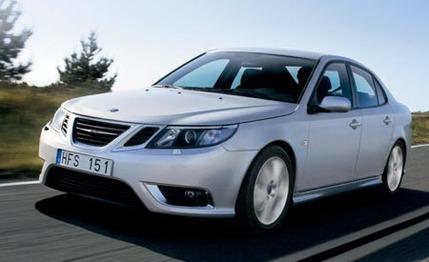 First Drive Review
First Drive Review
Saabs evolve, but not necessarily at the pace that other automobiles turn from knuckle draggers to slalom striders. Saabs have been desirable oddballs and have enjoyed constant fine-tuning that keeps the models relatively fresh despite often being well past their sell-by date.
It may surprise some to learn that the latest 9-3, introduced in 2004, has always shared its front-drive architecture with the Chevy Malibu and Pontiac G6. Despite this duality required of Saab's synergy-seeking GM owners, the 9-3's long-established character survives. Its combination of Swedish design and turbocharged engines is largely responsible for its uniqueness. So to further separate the 9-3 from the herd, Saab is tweaking the traits that make the 9-3 special.
Immediately apparent is the 9-3's front fascia. Borrowing heavily from Saab's Aero X concept, the new face does what every freshening hopes to accomplish-make the old car look seriously dated. Other exterior tweaks aren't as obvious-new door handles and taillights, for example-but they give the 9-3 a more-expensive-looking demeanor. A simpler but still Saab-like dashboard debuted last year, but otherwise, it's business as usual. The steering still feels overly light most of the time, more road noise can be heard here than in most competitors, the manual's shifter still feels as if it were attached to the transmission with ropes, and the seats are still swathed in expensive-looking leather and remain comfortable and supportive. The five extra horses put out by the front-driver's now 255-hp, 2.8-liter turbo V-6 were not readily apparent, but we did get to sample prototypes of the 280-hp version that will be exclusively available in all-wheel-drive models.
Despite the 9-3's go-its-own-way personality, the Swedish manufacturer isn't immune to the desires of the market. Most of the 9-3's competitors, for example, offer all-wheel drive, so after sufficient harping from Saab's U.S. arm, 9-3 sedans and wagons will be granted that option on January 1, 2008. That $2000 goody will be available with the 210-hp turbo four-cylinder as well as the turbo V-6. The all-wheel-drive system sends power to the rear wheels via an electronic clutch pack, where a computer-controlled limited-slip differential can lock the rear differential as needed to aid handling, stability, or traction. A brief drive in prototypes with the new XWD "cross-wheel drive" system (we weren't allowed to turn off the stability control) showed that the all-wheel-drive car is willing to hang out its tail under power until the stability control steps in, and of course it has more traction for accelerating in slippery conditions. We couldn't really detect the extra power of the 280-hp version, perhaps due to the all-wheel drive's additional weight. Still, the increased traction leads us to suspect that XWD models will prove more popular than the front-drivers over time.